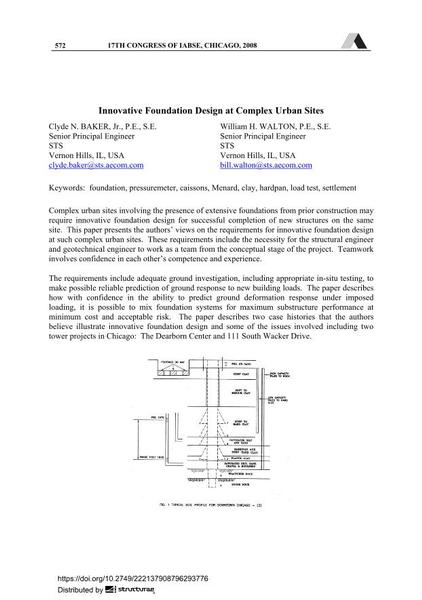Innovative Foundation Design at Complex Urban Sites

|
|
|||||||||||
Détails bibliographiques
| Auteur(s): |
Clyde Baker
William Walton |
||||
|---|---|---|---|---|---|
| Médium: | papier de conférence | ||||
| Langue(s): | anglais | ||||
| Conférence: | 17th IABSE Congress: Creating and Renewing Urban Structures – Tall Buildings, Bridges and Infrastructure, Chicago, USA, 17-19 September 2008 | ||||
| Publié dans: | IABSE Congress Chicago 2008 | ||||
|
|||||
| Page(s): | 572-573 | ||||
| Nombre total de pages (du PDF): | 9 | ||||
| Année: | 2008 | ||||
| DOI: | 10.2749/222137908796293776 | ||||
| Abstrait: |
Complex urban sites involving the presence of extensive foundations from prior construction may require innovative foundation design for successful completion of new structures on the same site. This paper presents the authors’ views on the requirements for innovative foundation design at such complex urban sites. These requirements include the necessity for the structural engineer and geotechnical engineer to work as a team from the conceptual stage of the project. Teamwork involves confidence in each other’s competence and experience. The requirements include adequate ground investigation, including appropriate in-situ testing, to make possible reliable prediction of ground response to new building loads. The paper describes how with confidence in the ability to predict ground deformation response under imposed loading, it is possible to mix foundation systems for maximum substructure performance at minimum cost and acceptable risk. The paper describes two case histories that the authors believe illustrate innovative foundation design and some of the issues involved including two tower projects in Chicago:
|
||||
